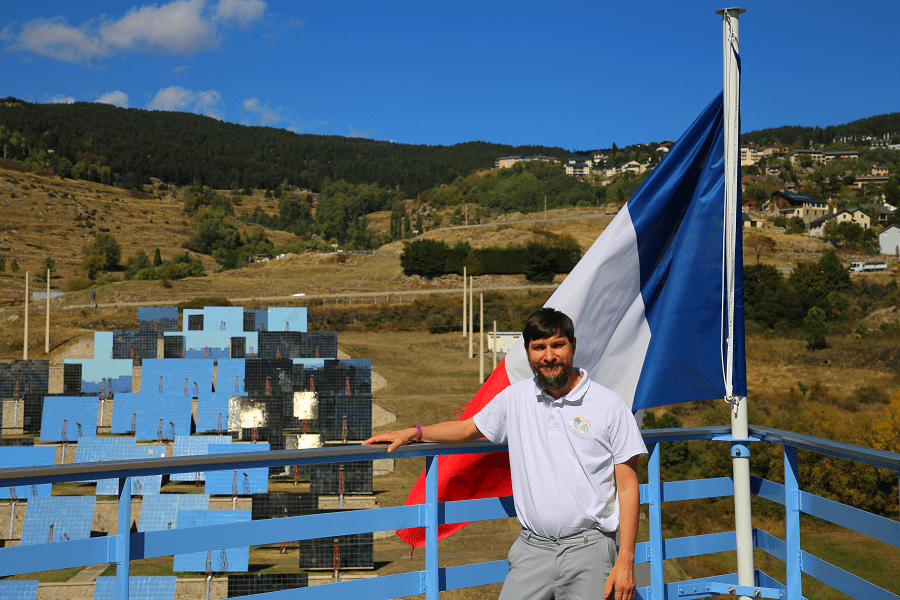
Alexander Petrovich Efremov – Doctor of Physical and Mathematical Sciences, Professor, full member of the Russian Academy of Natural Sciences, Director of the Educational and Scientific Institute of Gravity and Cosmology of the Peoples’ Friendship University of Russia.
«When we learn out how the physical world works, we shall find out why we are needed in this world».
Judging by your publications and presentations at conferences and seminars, you have been involved actively in the problem of finding physical laws in the hypercomplex numbers’ environment in recent decades. What is this direction of scientific activity associated with and what does it consist of?
Almost forty years ago, I spent almost a year as a young scientist at the University of Houston (Texas, USA), where my scientific adviser, Professor Robert Kiehn, proposed using quaternion number algebra, one of the most famous sets related to the so-called hypercomplex mathematical environment. There is not one unit, as in real numbers, and not two, as in the algebra of complex numbers, but there are four units in the quaternion algebra. Three of them are imaginary and, moreover, they are multiplied among themselves in violation of the permutability rule. So this is quite complicated mathematics, and as it turned out, not fully explored, although the great William Hamilton proposed it back in the middle of the 19th century. I was interested in it and discovered quickly a whole series of objects resembling in shape fragments of fundamental relations well known in physics in this environment. For example, it was possible to derive the equation of dynamics in one line in an arbitrarily rotating reference system.
And the energy determination of a charged particle in quaternion space led to the emergence of a spin-magnetic term, which Wolfgang Pauli introduced heuristically into the equations of quantum mechanics in 1927. This was no longer just a coincidence, but a discovery that indicates definitely that the fundamental relations of physics are imminently contained in a hypercomplex medium. And I have been working since then in this area, and I cannot say that I have been unsuccessful.
What laws have already been discovered there, and what fresh does your approach give in the development of the modern representation of the world’s physical structure?
The author of quaternion algebra Hamilton himself made the first remarkable discovery. He demonstrated that this algebra vector units triad behaves exactly like the axes of the rectangular coordinate system that René Descartes introduced intuitively into the computing practice over 200 years earlier. However, the quaternions mathematics turned out to be so unusual and complicated that some good scientists, almost according to Fonvizin, “were afraid of the abyss of wisdom” and came up instead with a simpler, but I would say, a palliative tool that is vector algebra. Therefore, quaternions were practically forgotten almost for a hundred years until the middle of the last century. To date, to put it briefly, it has been possible to discover a whole series of fundamental physics equations in an almost ready-made format in a hypercomplex environment. Maxwell’s equations of electrodynamics (the Swiss mathematician Rudolf Fueter did it), an unexpected vector version of the relativity theory that gives all the same results as Einstein’s Special Relativity are among them. A series of basic relations and equations of quantum mechanics, classical analytical mechanics, and relativistic mechanics are found in addition. Finally, a close (but so far formal) association between the quaternion space geometric objects and the base quantities characterizing the interactions of the elementary particles in subatomic models has been established. This is not at all a small number of quaternion matches as I sometimes call them.
Such approach usefulness seems to be obvious. It is worth reminding that all mentioned physical laws were discovered by great scientists either based on numerous experiments as classical and quantum mechanics equations or by heuristic assumptions testing. The same (sometimes exactly the same!) relationships in a mathematical hypercomplex environment, firstly, allow us to confirm the fundamental correctness of these laws, and secondly, to find ways to expand this already confirmed knowledge. A new in principle and very fruitful approach to the study of world laws and the physical structure is being developed here.
What exactly new did you manage to know out? After all, as far as one can understand, you extract formulas of already known laws of physics from a hypercomplex environment; But how to determine that this or that formula describes some law not yet known?
It is possible of course to recognize a formula found in a quaternion medium as a law of physics if a similar law was already known. But the new and the old formulas may differ generally speaking, and then the question arises of the possibility of the old theory correction. So, it turned out that even such an indisputable law as the law of classical Newtonian dynamics is also found among the formulas of quaternion mathematics, but it can have a slightly different form if the momentum vector of the body is directed differently than its velocity vector; such physical situations are known, for example, for distributed media (fluids) with spin. Another example is the vector version of relativity discussed above; yes, it contains all the effects of Einstein’s Special Relativity, however, unlike the latter, it allows any non-inertial motions of reference systems, and in addition, it predicts a completely different universe topology, which contains not one, but two three-dimensional worlds separated by a light barrier in the new interpretation. But what is most surprising, the quaternion approach allowed us to give a concrete and previously unknown example of the so-called pre-geometric (or before-geometric) space, “subject” under the geometric three-dimensional space of configurations; at one time, John Wheeler introduced a hypothetical concept of pregeometry as part of an attempt to understand the essence of the quantum physics description.
What practical meaning does the new tool of fractal pre geometry have? What other non-standard physical situations and objects originate in a quaternion environment? And what lies ahead in these studies?
Detailed studies of fractal space have shown that it is, generally speaking, a specific surface formed by spin-like vectors, but with complex components. The vector on this surface can be interpreted as the image of the quantum mechanics state function. Using this fact, it was possible to obtain a solution to the quantum mechanics equation for the hydrogen atom, the well-known solution of Erwin Schrödinger; great was our surprise when it turned out that the new solution describes exactly the heuristic model of Niels Bohr, proposed 13 years before the formulation of the quantum mechanics equation. The electron rotates around the nucleus (proton) in the Coulomb potential field along circular orbits with discrete values of their radius, angular momentum, and energy in the new solution; but the electron mass is distributed along the trajectory in this case. Another example of the fractal surface significance for physics is even more interesting.
It concerns classical analytic mechanics, which Nobel laureate Eugene Wigner called incomprehensible for its supernatural mathematical beauty as well as the inability to explain its origin. So, it turned out that one of the analytical mechanics basic equations, the Hamilton-Jacobi equation, is nothing more than a variant of the analog of Newton’s dynamics equation, written for a fractal function that is a mechanical action. This fundamental physical quantity, proposed by Pierre Maupertuis in the 18th century, was considered a mathematical abstraction until recently (see, for example, Wikipedia). However, in a hypercomplex environment, of which, of course, many pre-geometric objects should be considered as a part, the mechanical action has a distinct visual image, this is the angle of the “exit” of the particle state vector from the fractal surface real sector, measured in units of the Planck constant. By the way, this strange image has a simple (but also unusual) geometric analog in physical space, it’s just the rotation angle of a mass point around its axis.
These examples are a small part of the results of a remarkable mathematical field that we call the hypercomplex environment. One could talk here also about the particle model in the virtual ring form, about the photon probable fractal structure, the simplest component of which is the neutrino, as well as about the quaternion version of the tensor gravitational field theory, which allows disintegration into components in the quaternion spinors form. But these studies are not finished yet, so we shall talk about them someday later. And at the same time, we shall talk about the project of an experiment to test the Sun gravity law using a space probe and its gravitational maneuver near the planet Venus.
Interview: Ivan Stepanyan










